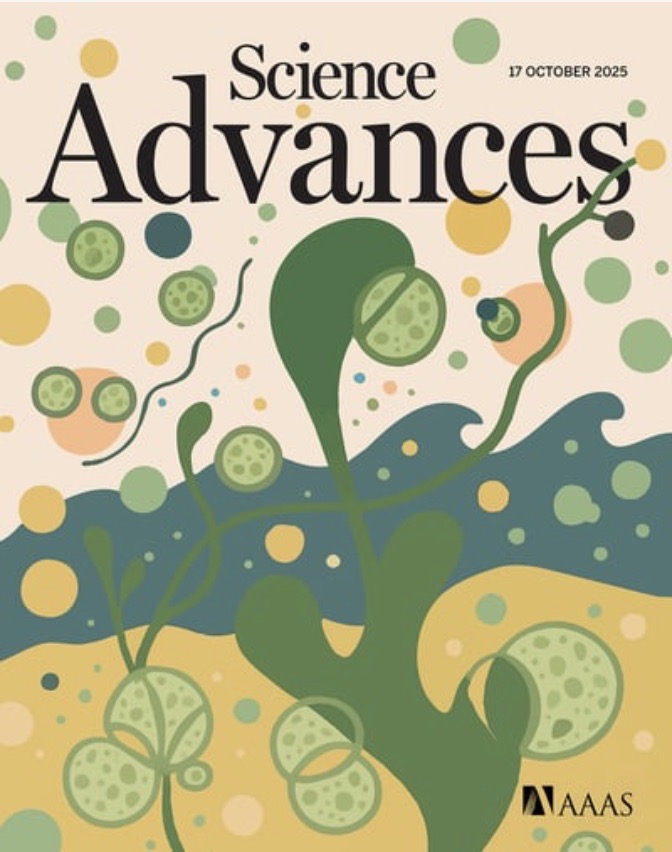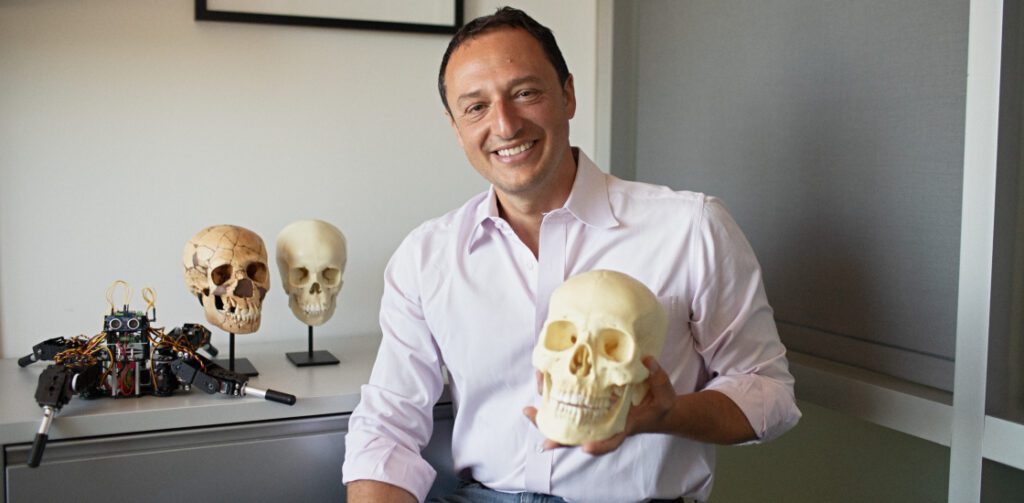15/10/2025
By Francisco Paiva Jr.
A study published Wednesday (Oct. 15, 2025) in Science Advances suggests that long-term exposure to lead may have played an unexpected role in the evolution of the human brain. According to the authors, contact with the metal more than two million years ago may have created evolutionary pressure favoring individuals more resistant to its toxic effects — a trait that could have contributed to the emergence of language and social cooperation.

The research was led by Brazilian neuroscientist Alysson Muotri, professor of Pediatrics and Cellular and Molecular Medicine at the University of California, San Diego (UCSD). “We think we’ve discovered how human language emerged and why Neanderthals didn’t have a brain capable of speech,” Muotri said. “We used brain organoids carrying the archaic and modern versions of a gene and showed that the form present in Homo sapiens was selected because of lead contamination that began more than two million years ago. That’s what we’re proposing — of course, it’s an extrapolation of experimental data, but so far no one has evidence that contradicts this hypothesis.”
Traces in fossilized teeth
To reach these conclusions, the team analyzed fossilized teeth from ancestral human species such as Australopithecus, Homo habilis and Neanderthals, as well as extinct great apes like Gigantopithecus blacki, which lived in China about 1.8 million years ago. Samples came from archaeological sites in South Africa, China, and Croatia, representing different moments in human evolution.
The fossils revealed recurring patterns of lead contamination preserved in microscopic layers of dental enamel, similar to tree rings. These layers suggest repeated exposure to the metal — evidence that early humans lived in naturally contaminated environments long before industrial pollution existed.
Lead is a well-known neurotoxin that impairs cognitive development and affects brain regions linked to language and attention. Even today, the World Health Organization (WHO) estimates that one in three children worldwide has blood lead levels above the safety threshold. According to the study, natural phenomena such as volcanic eruptions, dust, and mineral-rich springs could have carried high lead concentrations. Entire families may have ingested contaminated water while taking shelter in caves.
Brain organoids and genetics
In the lab, researchers grew miniature brains from human stem cells and exposed them to low doses of lead, simulating ancestral environmental conditions. The archaic version of the gene produced neurons that formed fewer synapses and disorganized more easily under exposure, while the modern variant maintained stronger, more stable connections.
The team used brain organoids—often called “mini-brains”—to compare how different versions of the gene NOVA1, found in Neanderthals, Denisovans, and modern humans, responded to lead. The “modern” Homo sapiens version proved significantly more resistant, preserving expression of FOXP2, a gene strongly associated with speech and language.
“The organoids were identical in every aspect except for that single genetic variation, allowing us to test whether that specific mutation between us and Neanderthals could have provided an advantage,” explained Muotri, who is also co-founder of Tismoo, a Brazilian health-tech company specializing in digital health for autistic and neurodivergent individuals. The results suggest that this subtle genetic change may have acted as a natural shield, reducing toxin damage and supporting the development of more complex neural networks.
Language as an evolutionary advantage
The researchers propose that this adaptation may have paved the way for speech and complex communication — traits that became fundamental for social organization and cultural progress. “Language is our superpower,” said Muotri. “It allowed us to organize groups, share ideas, and build civilizations. Maybe Neanderthals had abstract thoughts, but they couldn’t express them with the same efficiency.”
The study broadens understanding of the biological and environmental factors that shaped the human mind and reinforces the importance of integrating genetics, archaeology, and neuroscience to uncover our origins.
To read the full scientific paper, visit Science Advances, here.


